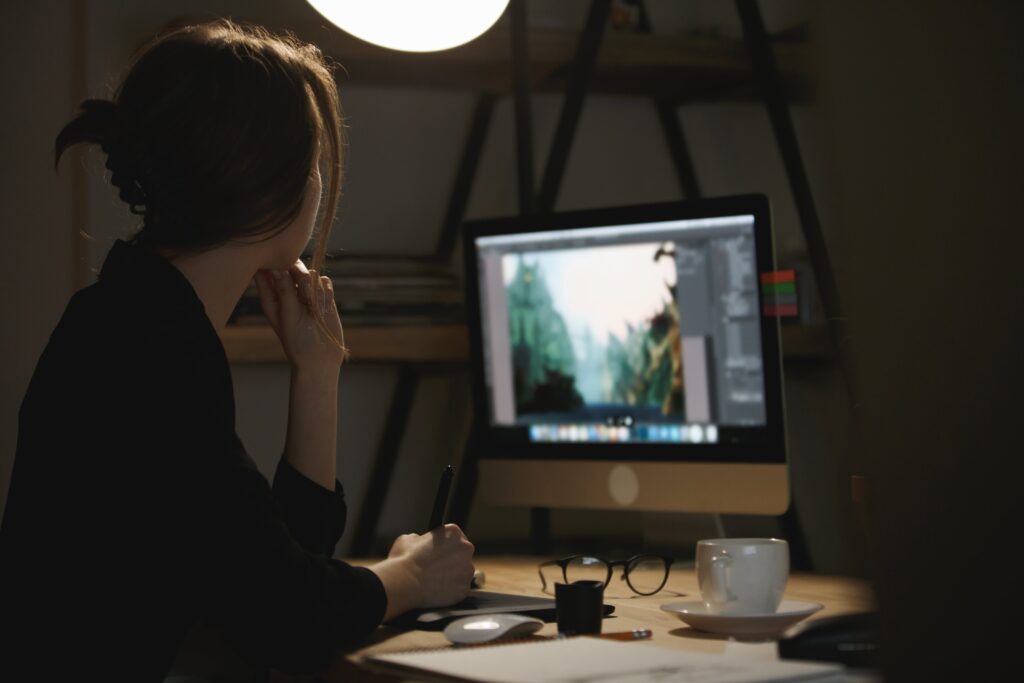Collage Animation
One of the most popular experimental animation techniques is collage animation. This technique involves creating animations using a mix of different materials such as paper cutouts, photographs, and other objects.
Collage animation allows artists to explore unique visual styles and create dynamic, textured animations that stand out from traditional 2D or 3D animations.
Paint-on-glass Animation
Paint-on-glass animation is a mesmerizing technique that involves painting directly on a glass surface to create animations. This technique is known for its ethereal and dream-like quality, as the transparency of the glass adds a magical element to the animations.
Artists can experiment with different types of paints and brushes to achieve various textures and effects, making each frame a work of art in itself.
Sand Animation
Sand animation is a captivating technique where artists manipulate sand on a backlit surface to create animations. This tactile and sensory approach to animation allows artists to craft intricate and fluid movements that evoke emotions and tell compelling stories.
Sand animation is a versatile technique that can be combined with other animation styles to create unique and visually striking effects.
Experimental 3D Animation
While 3D animation is a well-established technique in the industry, pushing the boundaries of traditional 3D animation can lead to innovative and groundbreaking results. Experimental 3D animation involves exploring unconventional rendering techniques, abstract shapes, and non-linear narratives to create animations that challenge viewers’ perceptions and expectations. By experimenting with lighting, textures, and camera movements, artists can create immersive and engaging 3D animations that break away from the norm.
Mixed-Media Animation
Mixed-media animation combines various animation techniques, such as traditional hand-drawn animation, stop-motion, and digital animation, to create dynamic and visually rich animations. By blending different styles and mediums, artists can create animations that are visually stimulating and conceptually complex.
Mixed-media animation allows for endless creative possibilities and encourages artists to think outside the box to create truly innovative works.
Augmented Reality Animation
Augmented reality (AR) animation is a cutting-edge technique that merges digital animations with real-world environments through the use of AR technology. By overlaying digital animations onto a live camera feed, artists can create interactive and immersive experiences that blur the line between the virtual and physical worlds.
AR animation opens up new possibilities for storytelling and audience engagement, making it an exciting field for animators looking to explore the latest technological advancements.
Experimental Character Animation
Character animation is a fundamental aspect of animation, and experimenting with different approaches to character design and movement can lead to innovative and compelling results. Artists can explore abstract character designs, unconventional movement patterns, and non-traditional storytelling techniques to create animations that challenge conventions and resonate with audiences on a deeper level.
By pushing the boundaries of character animation, artists can breathe life into their creations and infuse them with personality and emotion.
Interactive Animation
Interactive animation allows viewers to engage with animations in real time, creating a dynamic and immersive experience. By incorporating interactive elements such as clickable hotspots, branching narratives, and responsive animations, artists can empower viewers to interact with and influence the outcome of the animation.
Interactive animation blurs the line between passive viewing and active participation, offering a new way for artists to connect with their audience and create memorable experiences.
Experimental Motion Graphics
Motion graphics is a versatile medium that combines graphic design, animation, and visual effects to create dynamic and engaging visuals. Experimenting with motion graphics techniques such as kinetic typography, data visualization, and abstract animations can lead to innovative and visually striking results.
Artists can explore different styles, color palettes, and typography treatments to create animations that communicate complex ideas and concepts in a concise and impactful way.
Virtual Reality Animation
Virtual reality (VR) animation is a rapidly growing field that immerses viewers in a fully interactive 3D environment. By creating animations specifically designed for VR headsets, artists can transport viewers to virtual worlds and allow them to explore and interact with the animation in real time.
VR animation offers a new level of immersion and presence, making it an exciting medium for animators to experiment with spatial storytelling, interactive elements, and immersive experiences.
Conclusion
Innovation is at the heart of experimental animation, driving artists to explore new techniques, push boundaries, and challenge conventions. By embracing experimentation and thinking outside the box, animators can create groundbreaking works that captivate audiences and leave a lasting impact on the industry.
As technology advances and new tools and techniques emerge, the possibilities for experimental animation are endless, offering endless opportunities for artists to innovate and inspire.
Key Takeaways:
- Explore unique visual styles by mixing different materials for dynamic animations.
- Create ethereal animations by painting directly on glass surfaces.
- Craft fluid movements and evoke emotions using tactile sand manipulation.
- Innovate with unconventional techniques for immersive 3D animations.
- Blend styles for visually rich and conceptually complex animations.
- Merge digital animations with real-world environments for interactive experiences.
- Challenge conventions with unique character designs and movements.
- Engage viewers with real-time interactive elements for memorable experiences.
- Communicate complex ideas through innovative motion graphics techniques.
- Immerse viewers in interactive 3D environments for engaging storytelling.
For those looking to further their knowledge and skills in the dynamic world of animation, consider taking the NYU Animation Industry Essentials online course and certificate program offered by Yellowbrick. This comprehensive program provides valuable insights and practical training to help you excel in the ever-evolving field of animation.








